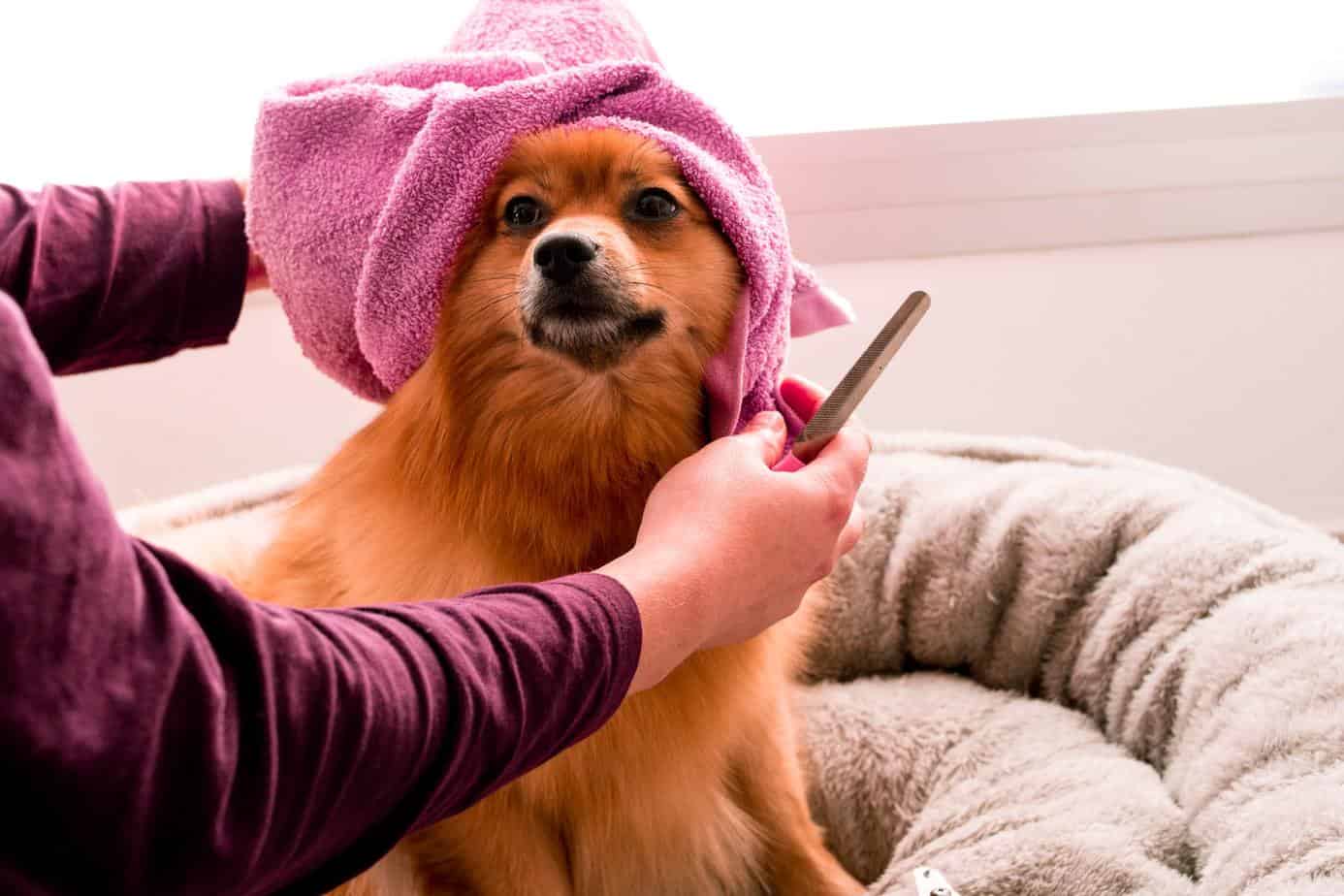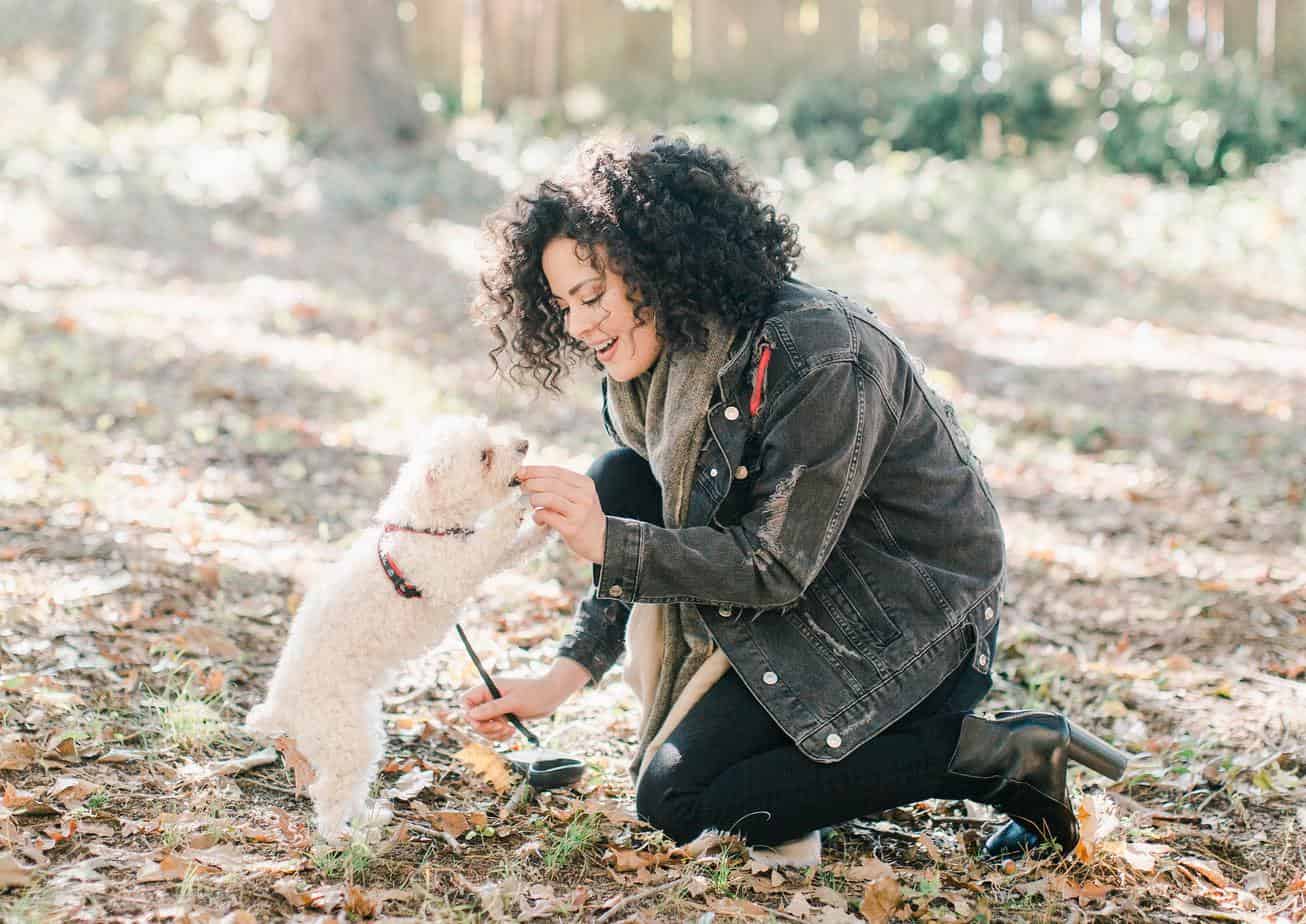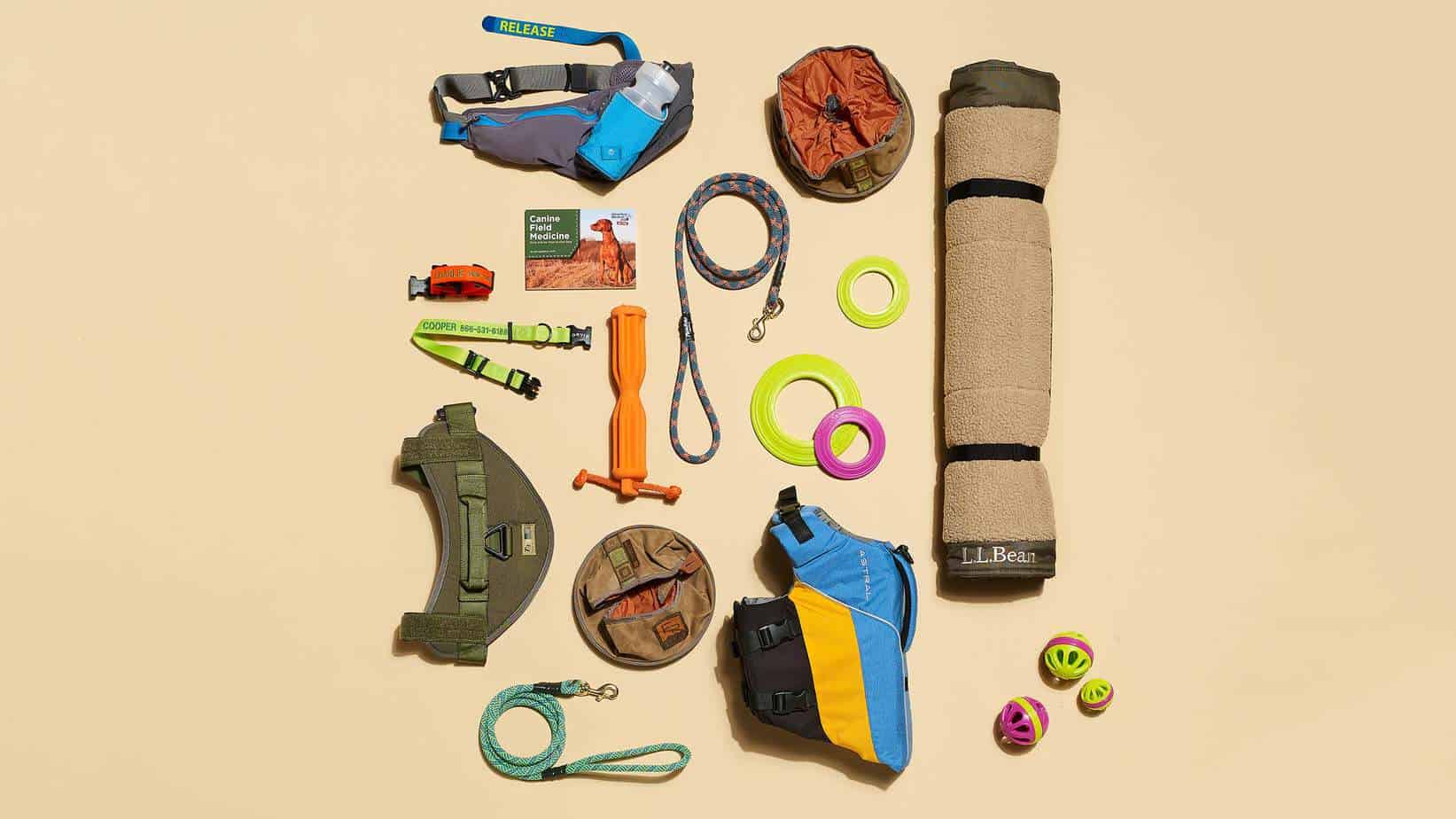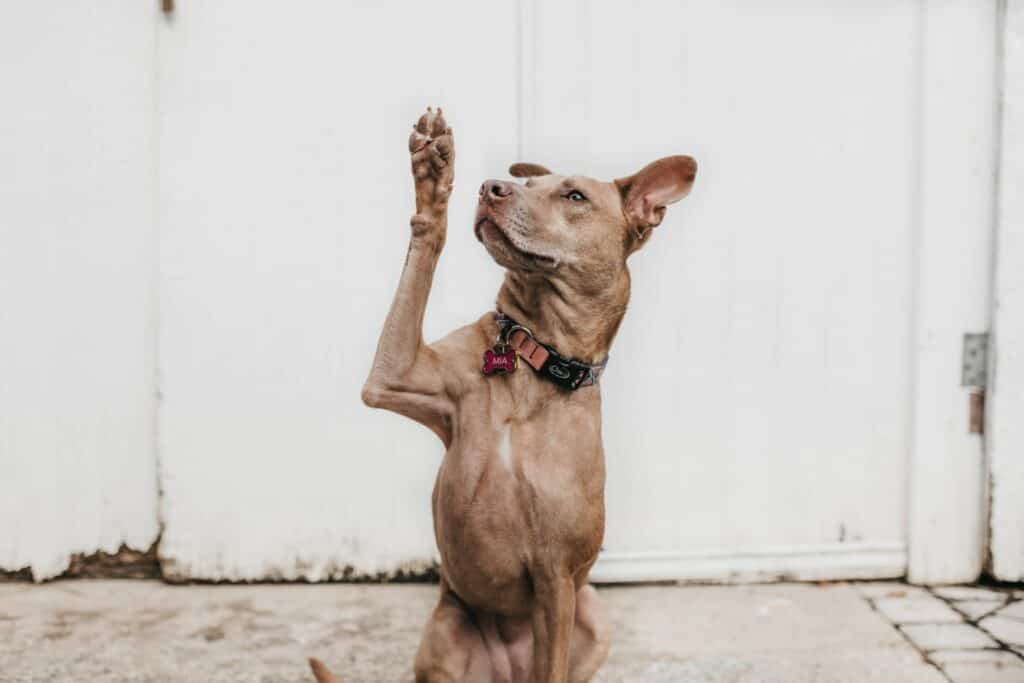- Nom Nom Dog Food Subscription Review - November 7, 2023
- 7 Best Dog Bed Ideas For Great Dane (DIY Options) - July 16, 2022
- Top 5 Rated Best Non-Prescription Diabetic Dog Food - July 15, 2022
Don’t make the mistake of thinking you’ve conquered the costs of owning a dog just because you can afford the asking price. It’s true that the first hurdle to dog ownership is the adoption fee or breeder’s price for a puppy, but that’s only scratching the surface. To make an honest budget for your dog, you have to peer a bit into the future.
The Basics for a Monthly and Yearly Dog Budget
Luckily, there are some pretty obvious doggie costs that come along with your new furry friend. I’ve put the ones I think are most crucial in this list along with some cost estimates. Where I can, I’ve tossed in a few money saving tips.
After we review all of the categories of dog spending you’re likely to face, I’ll give you some explicit instruction on how to create an accurate budget for the year and also how much a dog costs per month on average.
Whip out your spreadsheet, dog fans, let’s get calculating!
Initial Expenses: How Much Does It Cost To Purchase Or Adopt A Dog
Find yourself desperately Googling ‘cost of owning a dog calculator’ and getting pretty much nowhere? Here is a quick breakdown of my rough estimate of what you can expect in up-front dog costs.
- Adoption or breeder fee. How much do dogs cost upfront? This varies wildly. If you’re going to adopt, set aside $250 and hope you’ll be pleasantly surprised. Breeder fees for purebred dogs can be in the thousands. If you’re going this route you could speak to breeders of the specific breed you’re interested in for more information.
- Initial Vet Visit. AKC Pet Insurance estimates that a puppy’s first vet visit will cost around $1,000. The Cost Geek has more faith, and estimates a puppy’s first doctor visit at around $300.00. Older dogs may already have some or all of their vaccinations and require a less extensive check up. The best bet is to call and ask some local vets for a real estimate in your area. Some rescues and breeders include one or more vet visits for puppies in their fees, so remember to adjust your calculations for this if it applies to your situation.
- Initial supplies. You’ll need a crate, bedding, some toys, food, a collar and leash, an outdoor shelter (if your dog will spend time on its own in a yard or garage), cleaning supplies, grooming tools, etc.. You can shop sales and online to maximize your savings, but a wide estimate for dog supplies costs around $500.00. This includes a nominal local registration fee, as your city or town may require.
Grand Total: around $1,000.00. That’s before you even bring your dog home, not counting any significant breeder fees. This is really just an estimate though, where you live really matters in terms of the cost of goods and services.
Now is a good time to say I don’t want this article to shatter your dog owning dreams. If these numbers are surprisingly high to you, make sure you read through the end to see how to accurately figure out an estimate in your area for your situation.
Ongoing Expenses

Here’s where the challenge really begins, figuring out how much does a dog cost per year. You’ve got your initial expenses handled, but you want to responsibly predict the future. I’m here for you with some answers.
1. Medical Care
I want to talk about medical care first because it’s the real elephant in the room for some dog owners. I’m willing to bet most of us have been there: we desperately want/need to save an animal and can cover basic costs. We know we’re in a pinch as soon as a vet bill rolls around, though.
If you’re a first time owner, heed my warning and avoid this situation by planning ahead. You’ll save yourself a lot of stress and potentially spare your dog discomfort if you do.
I highly suggest you set aside some money in a savings account before you bring your dog home. You can do this a little at a time, but get a little nest egg going. Even $500.00 could provide some peace of mind.
It’s difficult to estimate what your dog’s medical costs will be, but some sources suggest as little as $250.00 per year, to as much as a staggering $10,000.00 per year! Don’t let that terrify you, but do let it motivate you to get your financial house in order to save stress and pain for your pet in the long run. Keep in mind that certain breeds may be more likely to have higher medical costs than others because of specialized care they require. Brachycephalic dogs like pugs and bulldogs often have breathing problems that require attention, for instance.
Don’t forget to factor in preventative measures like heartworm medication and flea and tick prevention (which may cost around $40.00 a month, depending on the size of your dog) as well as vaccine boosters. Additionally, puppies will cost a bit more in the first year or so because you’ll presumably get them spayed or neutered. This can cost up to $500.00 or more at some facilities.
2. Food and Treats
A medium to large breed adult dog will go through a 40lb bag of food in around a month and a half. Assuming you spring for the good stuff, that’s bill between $300 – $500 a year to feed your dog.
Let’s add treats into that figure. If you spend roughly 12.00 on a bag of treats and those treats last you around two months, this is another yearly figure of $72.
Therefore, feeding your dog could cost around $400 yearly. If you have a small breed dog or make other adjustments to save, you can get away with a bit less than that. Puppies typically need more calories than adult dogs so their food costs may be slightly higher.
A Few Ways to Save on Food and Treats
Did you know that your dog can eat some vegetables, like carrots? If you keep baby carrots on hand for your own groceries, toss one to your dog every once in awhile instead of a treat. You probably won’t notice the difference in your grocery bill, but you might in your dog’s food and treat bill!
Here is a list of healthy and safe vegetables for dogs:
- Carrots
- Cucumbers
- Green Beans
- Peas outside the pod; and
- Cooked potatoes and sweet potatoes
I also know a couple of dogs including my own who love ice cube treats. In the summertime, use this to lower your treat bill.
Give pieces of your dog’s regular kibble as treats. They won’t know the difference! You can use this during training to keep unwanted calories out of your dog’s diet as well as save some cash.
If you have other friends with similar sized dogs or dogs in the same breed as yours, you can buy food in bulk and divvy it up between you for a smaller, per person bill. Just be sure you don’t buy more than you can use or the food will go to waste.
Most bulk dry dog food can be stored in tightly sealed plastic bins. Just be sure to check regularly for mold or any evidence of unwanted critters getting into your dog’s food.
3. Training
You can skip dog training as an expense, but let’s factor it in since it’s something you ideally want to do. I can’t exactly tell you what trainers near you charge, but I can tell you that your dog will benefit from some professional training.
Some estimates for dog training suggest the average cost is between $50 – $125 for an eight week group session of dog training, though in certain areas it may be $300 or more.
If you can dedicate yourself to helping out, you can lower or eliminate this cost. Your friends, the library, and the internet can all help you train your dog for free or super cheap.

4. Gear and Toys
A conservative investment for dog toys and gear is $30 a month. Try to take advantage of sales and shop both online and in catalogs to score some deals to lower your bottom line.
If you do spend $30 per month on toys, that’s around $350 a year. Some months you may not spend this, but remember that your puppy will outgrow her collar or harness and items like beds and crates.
Many crates come with dividers so you can scale it to your dog’s current size. This type of setup is a good investment in the long run.
Another point to consider is that some dogs are more destructive than others. If your dog loves to chew up toys like it’s her job, you may be replacing toys often. This could increase your monthly toy and gear estimate.
A Kong toy is a must for all dogs, in my opinion, and especially helpful for chewers or anxious dogs.
5. Boarding And Daily Care
Boarding and daily care is an area many dog owners overlook. Do you go on vacation? What happens if someone falls ill and you need to be out of your home for a period of time? Do you need a dog walker or pet sitter to look in on your dog during the day?
The last thing you need during a stressful time is to worry about your pet’s care, and you don’t want to overlook any daily care expenses since these add up quickly.
My advice is to speak with your friends and loved ones and come up with a plan for who will watch or take your dog during an emergency or vacation. If you can’t find someone, you’ll have to budget boarding fees into your yearly estimate of dog expenses. If you’re looking to save money, see if any of your fellow dog-owning friends would be willing to swap dog-boarding duties while the other is on vacation.
In most cases, it will cost upwards of $25 a day to board your dog, and in some cases well over $50 per day. So if you plan on vacationing for a week each year and won’t be bringing your dog you could set aside $350 per year for potential boarding. If you have family, a friend, or a neighbor who can step in to help, you’ll save on this expense.
Don’t forget to account for long weekends that aren’t “dog-friendly” like weddings!
It’s very difficult to estimate the cost of daily care from a pet sitter or dog walker. I recommend that you shop around when you’re fleshing out you budget (details below on how to make your own) so you have an accurate figure.
How To Make Your Own Dog Budget

So all of that is good food for thought, but it isn’t really helpful to your specific situation. I believe in the whole ‘teach a man to fish’ idea, so let me walk you through how to make an accurate budget for your dog expenses in your city or town.
1. Make a list of my essential categories for dog spending. I’ll review them for you here.
Initial Expenses:
- Adoption or breeder fee.
- Initial vet visit.
- Initial supplies: crate, toys, food, and dog beds or shelters, etc.
Ongoing Dog Costs:
- Medical Care
- Food and Treats
- Toys
- Training
- Boarding and daily care from pet sitters or dog walkers
Make a spreadsheet or plot this out in a list.
2. Call around your local area to vets, trainers, dog walkers, and boarding facilities to ask for price estimates for services. Make a note of what they tell you.
3. Visit local pet stores or shop around online and come up with average costs for food, toys, and treats. Go ahead and make an actual dog shopping test run. Include any dog training books in the ‘training’ category.
4. Add up the numbers, but separate your initial expenses from your ongoing expenses. For instance, those initial costs are only relevant the first year you have your dog. Consider adding a contingency to the account for any unexpected costs – no matter how hard we all try, it’s difficult to plan for everything when it comes to owning a pet!
5. Your ongoing expense figure gives you an idea what you’ll spend on your dog a year. Divide that by 12, the number of months in the year, for an idea of how much a dog costs per month in your area. Use this as a savings guide during the year so you can stay on top of your dog’s needs.
You should revisit your budget every 6 months or so to see if there’s been any big increases in the cost of your essentials. If you’re really lucky, the cost of something will go down! If only economics worked that way more often.
Extra Tip: Ways To Save On Costs For Your Dog

Some of these ideas are a long shot, but every little bit helps.
City or County Stipends For Pet Care
You might be surprised at the local help available to you to pay vet costs through your City or County. Often, these subsidies are based on your income and require you to visit a certain vet or facility, but they can be a big help.
Most often, you’ll see stipends for having your pet spayed or neutered. Reach out to local rescues and ask questions if you can’t find this information on the internet. I once qualified for a voucher toward a spay, and was able to use it at the vet of my choice.
These are really great programs!
Sweat Equity Or Simbi For Boarding, Medical Care, And Pet Sitting
This tip goes under the ‘it never hurts to ask’ category. Ask local shelters with vets on staff or animal hospitals if they would trade services. Maybe there is a vet in your community that you can help out.
Depending on where you live and your level of luck, you can even try something like Simbi, a website that helps members network and share services. It’s like a high tech barter system. Maybe your vet needs some marketing help or someone to clean the office and they’re willing to trade you services.
It’s more likely that you’ll find someone willing to check in on your pet or walk them during the day. Be sure to properly screen anyone you let in your home and near your dog, however.
I’m not affiliated with Simbi in any way, but I think time banking and service trading is a great idea.
Ways To Save On Toys and Gear
Remember that your pet doesn’t know what season or occasion it is in the same way you do. They won’t mind Valentine’s Day themed toys in March and you’ll be able to pick them up for a steal.
Additionally, I sign up for all of the pet store clubs near me to capitalize on their member discounts. If you shop smart, these can add up.
Now, Step Away From The Spreadsheet
Phew, that was a lot of numbers, but it was good for you! It’s a great idea to have a figure going into the decision to get a dog. Remember that you can do some things to lower your actual costs, but I think saving a little more as a cushion is a great idea.
Your dog is really a member of the family, and his or her care costs money. There is no way you could really repay your dog for all of the joy and companionship they give, though, is there? They’re certainly entertaining enough to make up for a few movies or dinners out of the house.
Now, go remind your dog that they owe you a cuddle for all you shell out on them per year! You might also suggest that they learn to mow the lawn or something.
PS- let me know what you spend on your dog in the comments section! I also want to remind all my dog friends that the holidays are coming and I want to see cute pictures of what you’re buying your dog on social media. Tag me or send me photos and links!
Continue reading:
Gear To Have Before Day 1 With Your Dog




